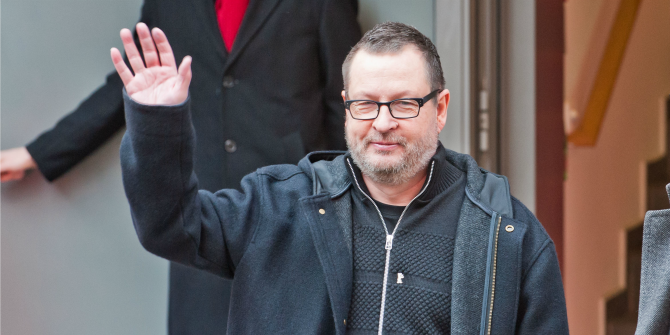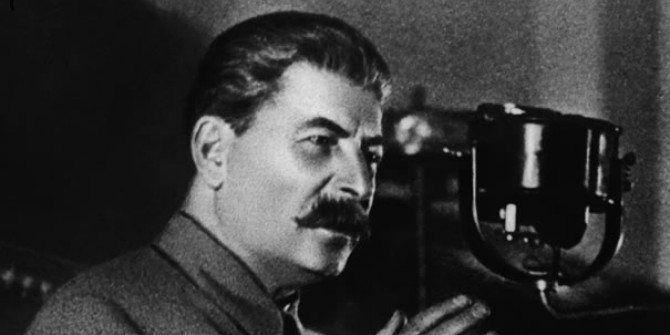
Despite having different professions, the entrepreneur Steve Jobs and the film director Lars von Trier have one thing in common: they are both notorious for their outbursts of anger or irritation and for bringing about shifts in mood between disturbance and enthusiasm. Far from being a coincidence, this appears to be a result of their extraordinarily creative and innovative practices. As the co-founder and former CEO of Apple, Jobs is generally regarded as the ‘icon of innovation’, while von Trier is considered one of the most experimental directors of our time – the ‘David Bowie of film-making’, if you like.
My research suggests that creative and innovative processes are affective in nature and that the prime indicators of creativity and innovation are precisely the feelings of anger and irritation and the moods of disturbance and enthusiasm.
Feelings and moods are not simply casual attendant phenomena. Moods reveal how we are situated and find ourselves in the world. Disturbance and enthusiasm are, more specifically, moods that reveal to us that the world appears different or open for new possibilities. These moods thus facilitate the creative and innovative processes that result in a break with existing ways of thinking and accustomed ways of doing things.
Anger and irritation, on the other hand, are strong feelings of repulsion that function as the determining ground for judgment in creativity and innovation. Creativity is not only about making new combinations, but discerning which combinations are meaningful. Irritation thus guides creativity in the sense that one is repulsed by new combinations that appear irrelevant. Correspondingly, innovation is not only about carrying out new combinations, but determining which combinations add value. Anger thus guides innovation in the sense that one is repulsed by ways of doing things that do not add value.
No innovation without anger
Being creative and innovative has become increasingly important for businesses and organisations as the pace of change accelerates. Understanding the affective nature of creativity and innovation is therefore a prerequisite for promoting creative and innovative processes and for preventing the negative side effects of these affects.
This is particularly the case with anger. There is no innovation without anger. But anger becomes counterproductive and damaging to working relations if it becomes personal. This is the case if one, rather than being repulsed by a person’s way of doing things, is repulsed by that particular person. There is thus a thin line between productive and unproductive anger, and this is why anger is considered precarious and has been disputed since the ancient Greeks.
Insights into creativity and innovation
To understand the affective nature of creativity and innovation we must turn to two classical theorists of modern times, the great mathematician Henri Poincaré and the great economist Joseph Schumpeter.
Poincaré developed the notion of stages in the creative process. He argued that the true work of the creative person consists in choosing among combinations so as to eliminate those of no use. This choice is guided by a fine and delicate set of rules: ‘It is almost impossible to state them precisely; they are felt rather than formulated.’ (Mathematical Creation (1908)). This is why creativity is not only resistant to conceptualization but also to automation, as it requires that the rules can be specified and written in code in order for a computer to perform a task.
According to Poincaré, judgment in creative processes takes place during the incubation stage. This ‘mystical’ stage occurs between the preparation stage, in which one engages consciously with a problem, and the illumination stage, in which a new idea suddenly appears. What is more, the transition from the incubation to the illumination stages involves a shift in mood from disturbance to enthusiasm.
Lars von Trier’s creative practice illustrates this process. His strategy is to take people by the hand and lead them from the focused field into the unfocused. He is notorious for pushing actors and scenes to their limit and beyond. The reason is that, through these disturbances one might get ‘some glimpse, some new paths or possibilities’, changing the mood completely to what he describes as a ‘miraculous feeling of life’.
Schumpeter, meanwhile, developed the modern economic concept of innovation. He argued that, because innovation involves the attempt to change existing practices, the entrepreneur has to rely on intuition because the person is ‘without those data for his decisions and those rules of conduct’ (The Theory of Economic Development, chapter 2 (1934)). Furthermore, it requires a special effort of will to change one’s accustomed practices and to ‘bring oneself to look upon it as a real possibility and not merely a daydream’. Finally, Schumpeter argued that innovation involves leadership so as to surmount the social resistance towards the changing of accustomed routines.
Steve Jobs is the perfect incarnation of Schumpeter’s entrepreneur. He was, not only famous for his accurate intuition, but also for his ability to persuade people to believe that his ideas were real possibilities and not merely daydreams. According to his former employees, Jobs was able to convince people of practically anything and make them do things they thought were impossible. In fact, his employees dubbed this ability to impress others with his intuition and effort of will, his ‘reality distortion field’.
Responsible innovation
The more innovative organisations become, the more important it is to ensure that innovation is carried out responsibly, not only with regard to the ethical aspects of anger, but also to the social aspect of resistance towards innovation. What appears to be expressed in such resistance is the intuitive sense of value lost by abolishing an existing practice. The task of the innovator is thus to take into consideration the different intuitions and determine whether or not the new practice appears to add value or not.
♣♣♣
Notes:
- This blog post is based on the author’s paper Conceptualizing creativity and innovation as affective processes: Steve Jobs, Lars von Trier, and responsible innovation. in Philosophy of Management, 2017.
- The post gives the views of its author, not the position of LSE Business Review or the London School of Economics.
- Featured image credit:Lars von Trier, by Siebbi, under a CC BY 3.0 licence, via Wikimedia Commons
- Before commenting, please read our Comment Policy.
 Lars Geer Hammershøj is Associate Professor in Educational Philosophy at the Danish School of Education, Aarhus University. He has a PhD in sociology from University of Copenhagen. Lars has published books and articles about creativity and innovation, the future of education, and diagnosis of the times. He is a former director of the research programme Diagnostics of Contemporary Education and a former director of undergraduate studies, at the Danish School of Education.
Lars Geer Hammershøj is Associate Professor in Educational Philosophy at the Danish School of Education, Aarhus University. He has a PhD in sociology from University of Copenhagen. Lars has published books and articles about creativity and innovation, the future of education, and diagnosis of the times. He is a former director of the research programme Diagnostics of Contemporary Education and a former director of undergraduate studies, at the Danish School of Education.






in other words, clinically bipolar folks.